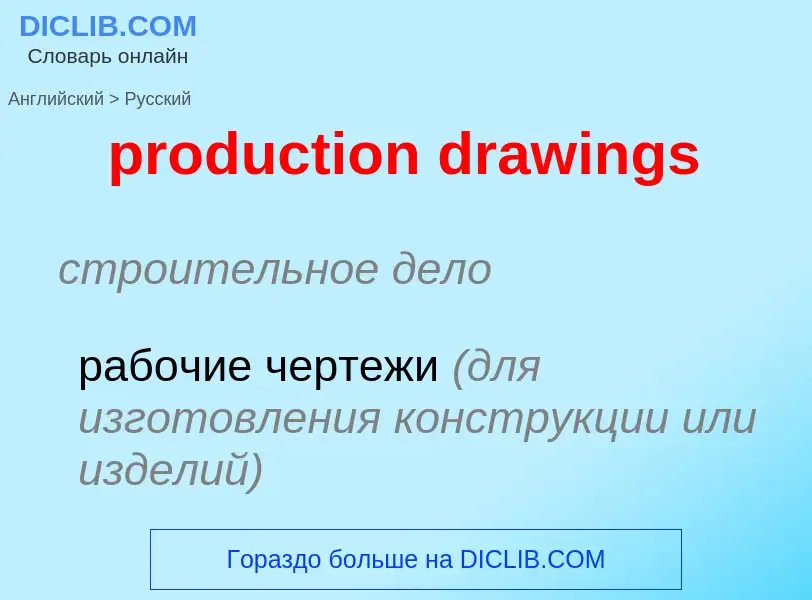Translation and analysis of words by ChatGPT artificial intelligence
On this page you can get a detailed analysis of a word or phrase, produced by the best artificial intelligence technology to date:
- how the word is used
- frequency of use
- it is used more often in oral or written speech
- word translation options
- usage examples (several phrases with translation)
- etymology
production drawings - translation to russian
строительное дело
рабочие чертежи (для изготовления конструкции или изделий)
Wikipedia

Embryo drawing is the illustration of embryos in their developmental sequence. In plants and animals, an embryo develops from a zygote, the single cell that results when an egg and sperm fuse during fertilization. In animals, the zygote divides repeatedly to form a ball of cells, which then forms a set of tissue layers that migrate and fold to form an early embryo. Images of embryos provide a means of comparing embryos of different ages, and species. To this day, embryo drawings are made in undergraduate developmental biology lessons.
Comparing different embryonic stages of different animals is a tool that can be used to infer relationships between species, and thus biological evolution. This has been a source of quite some controversy, both now and in the past. Ernst Haeckel at the University of Basel pioneered in this field. By comparing different embryonic stages of different vertebrate species, he formulated the recapitulation theory. This theory states that an animal's embryonic development follows exactly the same sequence as the sequence of its evolutionary ancestors. Haeckel's work and the ensuing controversy linked the fields of developmental biology and comparative anatomy into comparative embryology. From a more modern perspective, Haeckel's drawings were the beginnings of the field of evolutionary developmental biology (evo-devo).
The study of comparative embryology aims to prove or disprove that vertebrate embryos of different classes (e.g. mammals vs. fish) follow a similar developmental path due to their common ancestry. Such developing vertebrates have similar genes, which determine the basic body plan. However, further development allows for the distinguishing of distinct characteristics as adults.



![The assembly plant of the Bell Aircraft Corporation in 1944. Note parts of [[overhead crane]] at both sides of photo near top. The assembly plant of the Bell Aircraft Corporation in 1944. Note parts of [[overhead crane]] at both sides of photo near top.](https://commons.wikimedia.org/wiki/Special:FilePath/Airacobra P39 Assembly LOC 02902u.jpg?width=200)
![Mass production of [[Consolidated B-32 Dominator]] airplanes at [[Consolidated Aircraft]] Plant No. 4, near Fort Worth, Texas, during World War II Mass production of [[Consolidated B-32 Dominator]] airplanes at [[Consolidated Aircraft]] Plant No. 4, near Fort Worth, Texas, during World War II](https://commons.wikimedia.org/wiki/Special:FilePath/Consolidated TB-32 production line.jpg?width=200)


![museum in Yekaterinburg, Russia]]. museum in Yekaterinburg, Russia]].](https://commons.wikimedia.org/wiki/Special:FilePath/Литейная форма.jpg?width=200)
